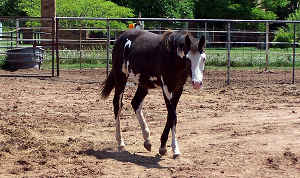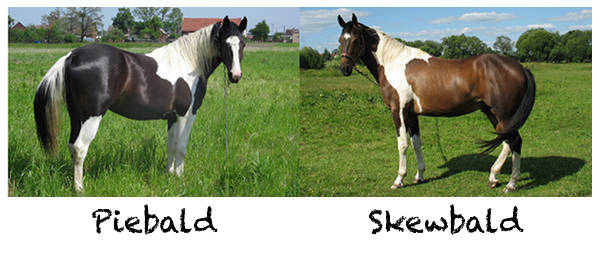 Over the spring and summer I’ve been working my way through the colors section, providing some new information and updated images. I’ve gotten through the solid colors and am now sharing the lovely white patterns.
Over the spring and summer I’ve been working my way through the colors section, providing some new information and updated images. I’ve gotten through the solid colors and am now sharing the lovely white patterns.
White Patterns
There are a handful of white patterns that can affect the base colors as well as those affected by modifiers and dilutions (or even other white patterns). Today I want to share a little about the pinto white pattern which is responsible for a wide variety of lovely spotted patterns.
Pinto White Pattern
Pinto is a blanket term used to describe a collection of spotted white patterns that can be found across most horse breeds. This term is often incorrectly interchanged with paint, which is actually a color breed that only registers animals who carry pinto patterns with Thoroughbred or Quarter Horse bloodlines.

Pinto Terminology
While terms vary by location for spotted pintos, there are two terms that are often used to refer to them by color. Piebald horses are the result of any pinto pattern on a black base and skewbald horses are the result of any pinto pattern on a chestnut or bay base.

Pinto Patterns
There are several different patterns that are associated with the pinto name, each one with their own specific spotting patterns and characteristics.
Frame – Characterized by white spots framed by a field of color, dark legs, white facial markings and at least one blue eye. Frame is responsible for the Overo Lethal White Syndrome in its homozygous form.
Sabino – Characterized by white markings on the face, a white lower lip or chin, one blue eye, at least one white leg and often roaning.
Splashed White – Characterized by spots on the lower half of the body and head (as if they’d been dipped in paint), at least one blue eye, often head is all white and at least one white leg.
Tobiano – The most common and easily recognizable pattern, tobiano animals are characterized by white legs, solid colored heads, brown eyes and spots that are arranged in a vertical pattern along the animal’s topline.
Tovero – Displays a combination of tobiano and overo characteristics and genetics. More difficult to distinguish than the rest they are characterized by colored spots on a field of white, at least one blue eye and often colored heads or colored ears.
Dominant White – Often mistaken for greys or a cream dilution, dominant white is similar to human piebaldism and can create totally white animals. These are often considered ‘true white’ horses.
Each pattern has its own distinguishing factors, but all of them produce beautiful animals!
Learn More About Color
Be sure to visit the new and improved color section for more information about pinto horses and stay tuned, next week we’ll take a look at the appaloosa (Leopard) white pattern.